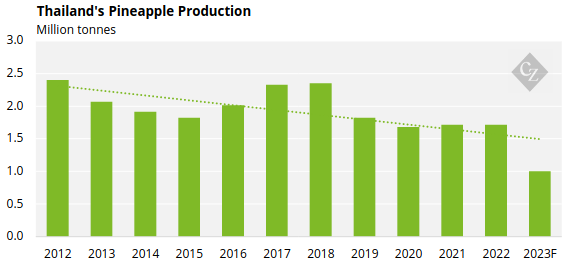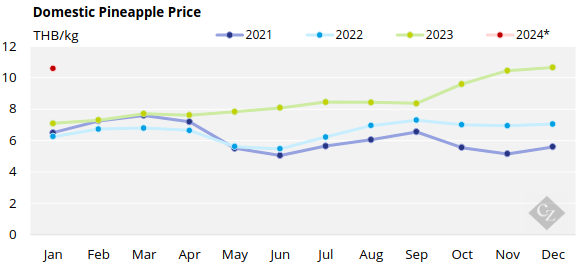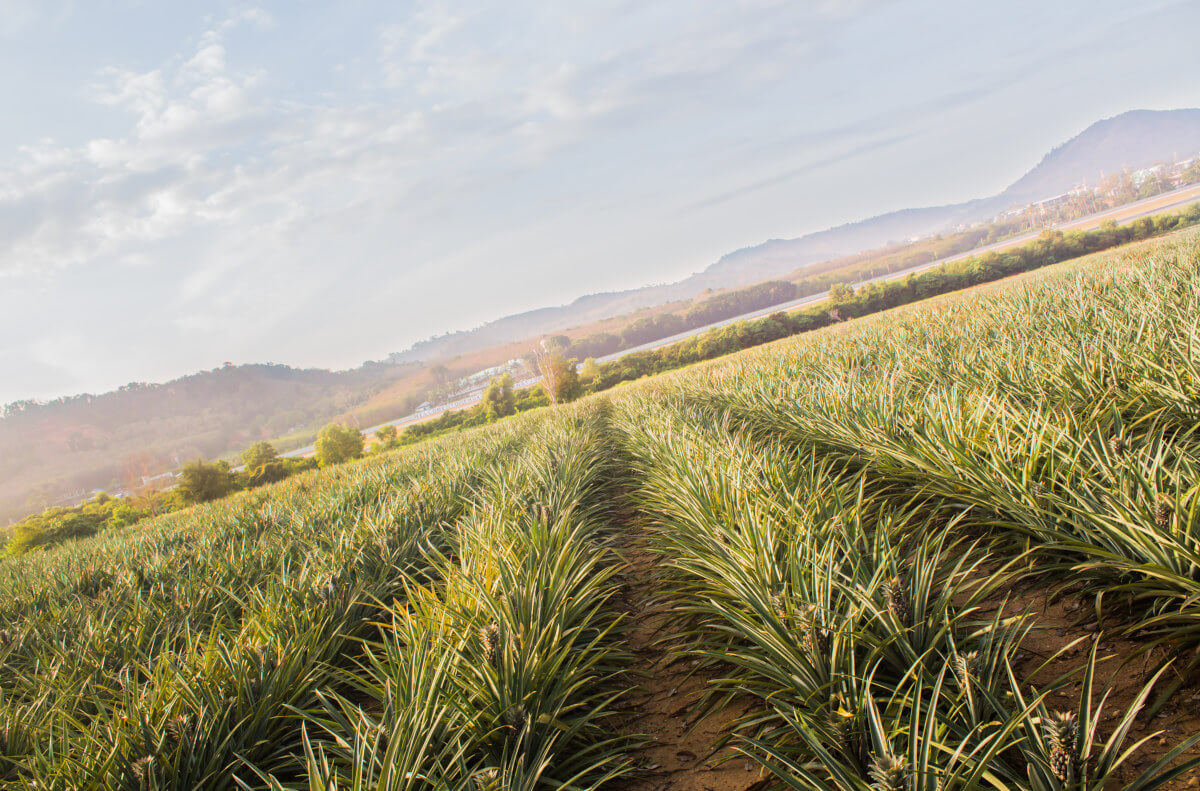Insight Focus
- Thailand’s pineapple market faces low production and smaller fruit sizes.
- Hot weather from El Nino leads to decreased yields, prompting constant price increases.
- Factories desperate for production face shortages amid supply chain strains.
Currently, Thailand’s pineapple market faces challenges stemming from low crop production and diminished yields.


The industry grapples with several issues, including smaller-than-normal pineapple sizes and decreased productivity. These factors collectively contribute to a scenario where factories are desperate to secure production.
One of the primary reasons behind the poor performance is the adverse impact of hot weather from the El Nino effect. Prolonged periods of high temperatures and less rainfall have negatively affected pineapple cultivation, leading to reduced fruit yields.

As a result, farmers struggle to meet demand, and factories face shortages in their supply chain.
The pineapple shortage has prompted a continuous increase in prices, worsening the situation for both producers and consumers. With supply unable to meet demand, prices surge. This upward trend in pricing is expected to persist until there is a significant improvement in crop production and supply chain stability.

To address these challenges, stakeholders in the pineapple industry may need to explore strategies such as implementing climate-resilient agricultural practices, investing in irrigation systems to mitigate the impact of El Nino, and diversifying crop portfolios to reduce dependence on pineapple alone.
In conclusion, Thailand’s pineapple market is currently facing a period of low production, smaller fruit sizes, and decreased yields due to adverse weather conditions.
Factories are struggling to secure sufficient production, leading to constant price hikes and economic pressures across the supply chain.
Collaborative efforts and strategic interventions are necessary to navigate these challenges and ensure the long-term sustainability of the pineapple industry in Thailand.















